The Community Roundtable (TheCR) runs a membership-based network for community managers. For the last seven years they have surveyed their network and beyond to produce an annual report on the state of community management. The report typically looks at the activities and corresponding maturity levels of various corporate-led online communities, as well as giving useful insights into the difference between best in class communities and those that are still learning the ropes.
This year’s State of Community Management report (SOCM) was released on May 18th and is full of valuable insights for community managers. The graph below shows the industry breakdown of the 339 communities that made up the report:
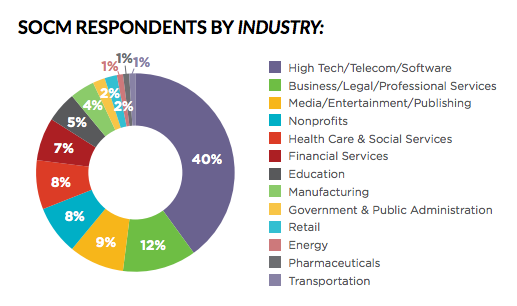
While scientific communities don’t earn their own slice of the chart, the following three top-level findings of the report are broadly applicable to all types of community-building activities.
Tip #1: Define and measure shared value
What do your members get out of your community? What value does your organization get from it?
Answering each of these questions alone is important, but TheCR has found that the strongest communities result when managers can define how community members and the organization benefit together.
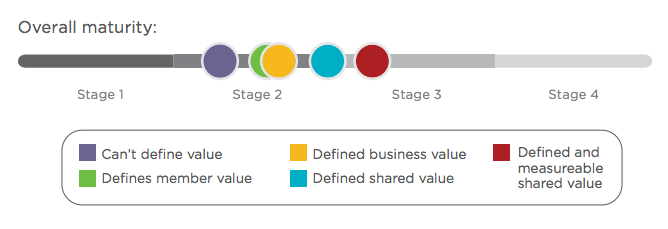
The most mature and successful communities defined shared value for their organizations and communities – and they identified metrics to measure it. Activity, behavior change, and outcomes were all important components of value measurement for best-in-class communities (See below).
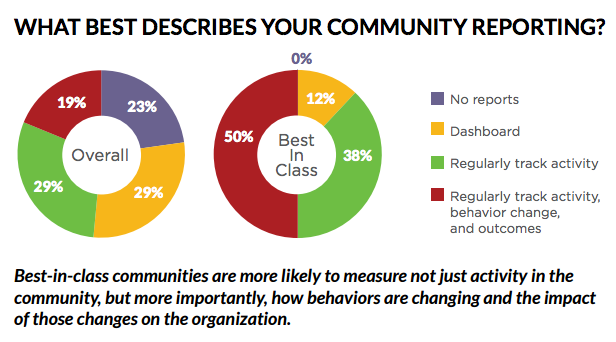
What you can do: Define the value that your community brings to your organization and your members – and look for metrics that align with these shared values. For example, if creating and refining code that solves a particular set of problems is a shared value for your community, you could keep track of the quantity of code created and reused each week or month.
Tip #2: Give your members real responsibility
TheCR found a consistent correlation between systems that give members responsibility and voice in the community and how engaged the community is. When you think about it, this makes sense: the more invested you feel in a group project, and the more valued you believe your feedback is, the more likely you are to volunteer to spend additional time on the project.
And obtaining feedback isn’t a passive process of waiting for people to come and tell you what they think: 60% of Best-in-class communities in SOCM 2016 sought out feedback from members through formal processes compared to only 30% of communities overall. These top communities were also significantly more likely to establish defined roles for their members to contribute to strategic planning (see below).
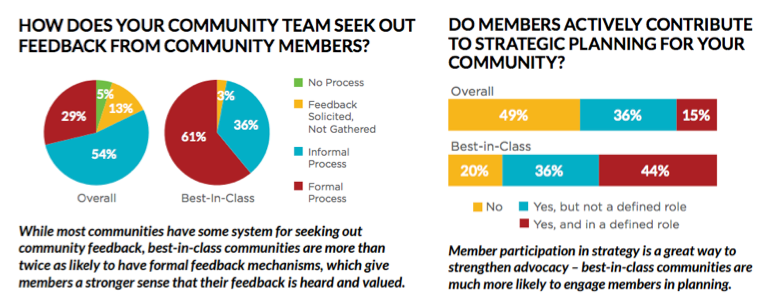
What you can do: As a community manager, you play an important role in creating opportunities for members to give feedback and participate in decision-making. Try to be more open with how you discuss feedback and the planning of future activities.
Tip #3: Forget the 90-9-1 rule
If you’ve worked in the community space for a while, you’ve probably heard of the 90-9-1 rule, which claims that the average online community is made up of 90% “lurkers”, 9% contributors, and just 1% content creators.
The SOCM 2016 report suggests that this is far from true. Instead, the average community was made up of only 50% lurkers (when you exclude inactive users who create accounts but never log in), roughly 25% contributors, and 25% creators. Furthermore, best in class communities see even less lurking – that figure drops to 43%, while those creating content rises to 31% (see below).
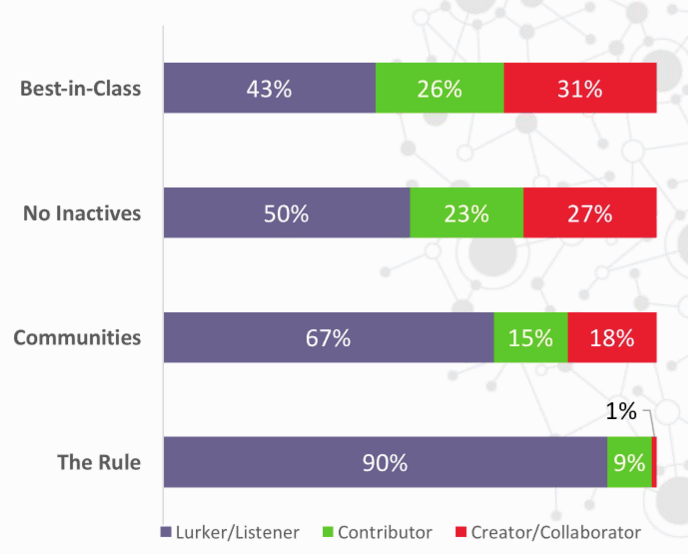
What you can do: Keep tabs on the activity level split for your own community. Check to see if the old rule is ready for retirement.
If you found this analysis useful, help us gather our own data about the state of scientific community management:
We’re working to produce a similar report focused solely on scientific communities. To do so we’ve partnered with TheCR to adapt and reuse some of their questions in our own survey for scientific community managers. If you manage a scientific community, please take a few minutes to complete it!